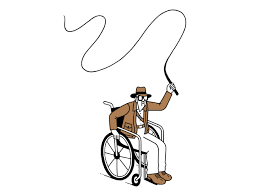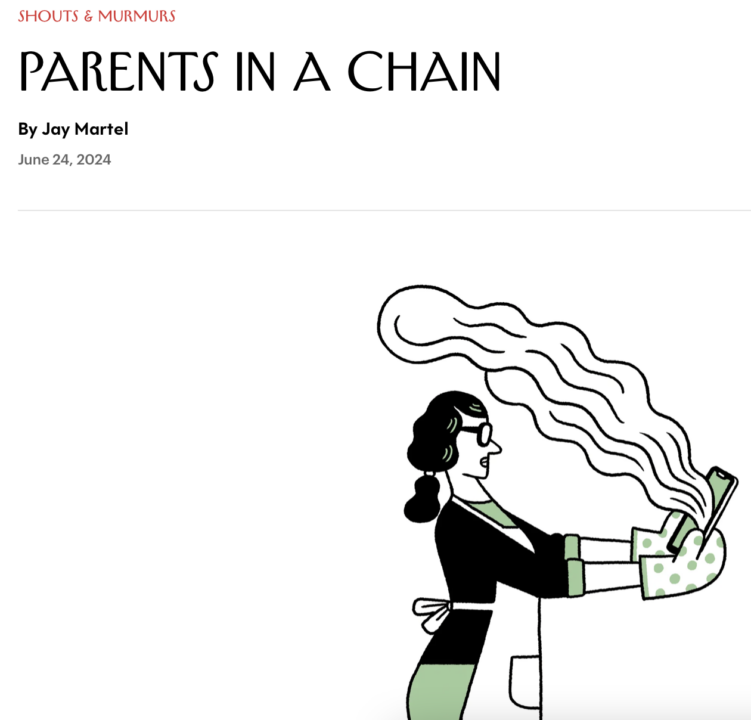Hot Dogs. Franks. Wienies. Deadly Missiles. We’re talking American icon. The summertime specialty. Pulverized meat wedged into an animal-intestine casing and steamed, boiled, fried or grilled, then plopped into a roll and garnished according to regional preference.
But the hot dog itself has little to do with the cult of the hot dog, a dense and smoky world with its own customs, lingo, buildings and vehicles glorifying this wily offspring of the German sausage. The following shrines were selected for devotion and creativity beyond the call of duty in delivering a decent dog to a hungry public.
Nathan’s Famous
Coney Island, New York
At Nathan’s Coney Island, there is a separate line for each dish, so if you want a Coke and a fried-clam chaser for your world-famous hot dog, you have to stand in three different lines — which isn’t a problem in the spring. “But in the summer, look out,” says Sol Gaver, who started in French fries thirty-two years ago. Sol says he’s seen fistfights break out in long lines. “Fighting over a hot dog,” he says, shaking his head, “can you believe it?”
Founded in 1916, Nathan’s is reputedly the oldest fast-food franchise in the world. Nathan Handwerker and his wife, Ida, both young Polish immigrants, met and fell in love as bun slicers at Feltman’s of Coney Island. That’s where, as legend has it, they were encouraged to open their own place by two singing waiters named Jimmy Durante and Eddie Cantor. With $300 saved from bun slicing, Nathan and Ida opened a small stand selling a lightly spiced all-beef dog for a nickel. The dogs sold like crazy; everyone else was charging a dime.
Celebrities on both sides of the counter are a rich part of Nathan’s lore. Cary Grant was a stilt walker with a sandwich board for the stand when he was Archie Leach, and Clara Bow was a bun slicer here when she called herself Clara Bartonelli. This summer keep your eyes peeled for Jackie Onassis (her real name), a rumored Nathan’s fan, as well as scores of politicians with Nathan’s dogs mugging for photographers — a seeming prerequisite for any Gotham political career. And, of course, there’s the annual hot-dog-eating competition on July 4th; last year the sumo-size Japanese champion beat out his American counterpart by eating fourteen and a half hot dogs in eight and a half minutes.
Fenway Park
Boston
Entering the 1986 season, the Boston Red Sox had three strikes against them: Bill Buckner’s ankles, their pitching and the Fenway Frank. Perhaps no hot dog has been as maligned as the dog once served to unsuspecting Sox fans. “Fleshy pink links with a mortuarial flavor that conjures horrifying images of ground-up eyelids, lips and snouts of pigs,” wrote roadside-food experts Jane and Michael Stern.
But all that changed with the ’86 season. Buckner got corrective shoes, Sox pitching came together, the wins started rolling in, and the Fenway Frank, up until then made by Colonial Hot Dogs, was revamped by Kirschner of Maine.
“We took out some of the water and changed the recipe,” says Tyler Phillips, vice-president of marketing for Kirschner. The fans took notice. Kirschner worked triple shifts to keep them munching through the Sox’ championship season, and at one point an extra two trailerloads had to be rushed south as championship-series attendance and extra-inning games depleted the Fenway wiener war chests. Bob Lurie, the owner of the San Francisco Giants, enjoyed the Fenway Frank so much during the World Series that he decided to have the frank shipped west, ten cases at a time, for consumption in his private box at Candlestick Park.
Eddie Andelman, the host of a popular sports phone-in show on radio station WHDH, in Boston, is among the frank’s lingering critics. “Sure, the squirt factor is better,” he says, referring to the hot jet of moisture all fans experience on their initial bite into a ballpark frank. “But I’d still rank it in the bottom third of the league, not because of the frank itself but the way it’s prepared: sitting in that water for centuries and then brought to you by a vendor in a stained apron — I swear they must rent them that way — who gives it to you with one of those sissy-type mustard packets. If you don’t have a pair of scissors, how are you supposed to put mustard on your dog?”
The frank fares better among Boston sportswriters, who nevertheless contend it is not yet championship material. An informal poll rated Milwaukee and Anaheim as top dogs, with Baltimore and Cleveland only a half frank back. But, in the end, a hot dog at the ballpark, in the words of Boston Globe scribe Neil Singelais, “would have to be awfully bad for it not to be good.”
Tail o’ the Pup
West Hollywood, California
Owner Eddie Blake has no illusions about what initially brings customers to Tail o’ the Pup. It’s not the food. “What we got here,” says Blake, “is a building in the shape of a hot dog.”
Last year Tail o’ the Pup was a historic landmark with an uncertain future. The old dog and nouvelle cuisine clashed head-on: trendy Ma Maison bought the plot the Pup sat on and earmarked it for expansion. Blake then had his Pup plucked from the earth and moved around the corner to San Vicente and Beverly, where business these days is just fine.
“It’s just a real serious hot-dog eater’s place,” says Mark Volman of the Turtles. “Eddie is like the Phil Spector of the hot dog — but without the gun.” Volman, like most Pup regulars, takes his seat in front of the big dog early (the interior is only large enough for the kitchen and the servers). “It’s amazing how many people eat chili dogs before 9:00 a.m.,” he says.
Pup clientele includes brain surgeons from nearby Cedars-Sinai Hospital, rock & rollers on the way to the Record Plant (English bands, in particular, love the stand’s shape), actors en route to the CBS studios and celebrity regulars like Jay Leno and Lily Tomlin.
Recent renovations have included a paint job and a “swamp cooler” — an air-conditioning unit — in the ceiling. But at night the bun still closes over the wiener — until the smoky early-morning sunlight of L.A. and the smell of chili dogs bring on a new day.
The Varsity
Atlanta
The Varsity proclaims itself the largest drive-in in the world and, after fifty-nine years in business, sells two miles of hot dogs every day. The cumulative strand of Varsity dogs, as any four-year-old with a calculator knows, would comfortably girdle the globe (42,370 miles). The dog is served with chili unless you order a “naked dog.” Nude or not, it’s one very intense five-inch dining experience.
Enter the Varsity at your own risk at lunch time, when huge mobs pack the block-long fast-food Mecca, winding around art deco counters with stainless-steel hoods while conveyor belts pump out dogs and burgers at an alarming rate. Glassed-in kitchens allow the public to view onion-ring workers tirelessly cutting and weeping, cutting and weeping, all day long. In fact, some people who come to the Varsity aren’t even hungry — they just like to watch.
Have your order in your mind and your money in your hand, reads a sign on the belts. “Whaddaya have? Whaddaya have?” barks the man in the Varsity hat. “Um, a hot dog with onions on the side and potato chips,” you say. “Dog sideways and a bag of rags!” he screams. “Next!” Before you have a chance to wonder what it was you ordered, your food is ready. Now comes the hard part: What station do you want to watch while you dine? The Varsity has rooms for each of five different TV stations.
“We’re open every day of the year,” says Nancy Simms, the Varsity’s owner, on a quick break between meal rushes. “The only day we closed was the day Daddy died.” Daddy is Frank Gordy, a Georgia Tech dropout who started the Varsity in 1928 on a small lot with a white picket fence. It was here he started “curb service”: courteous “curb boys” would jump up on the running boards of cars as customers entered the parking lot and would have their orders into the kitchen by the time they were parked. Today the star of curb service is Flossie, who is thought to be past eighty and will sing the extensive Varsity menu to your car upon request.
The Varsity serves all kinds, says Simms: “We were even sending hot dogs to this Jal pilot in Japan. And then there are these Gypsies. I don’t know where they’re from, but they always come in huge groups and buy hundreds of our homemade pies.” Vladimir Dunayev, a chief correspondent for Soviet radio and TV, came through Atlanta two years ago to interview Mayor Andrew Young and stopped by for a chili dog. His controversial comment, no doubt never reported in the Soviet press: “We should buy these dogs, not grain.”
Be-Be’s
Chicago
“This guy was raised by coyotes,” owner Mike North yells as a man in a jean jacket places his order. “He gets his food in a bowl.”
“Mike is so rude to them,” marvels Be-Be, his wife and business partner. “I guess a lot of people are bored with their jobs, and when they come here, it’s a real change of pace.”
“I insult them regularly and make them feel welcome,” says Mike. It works. Walk into the small storefront stand — which used to serve as the exit of a car wash — and you’re instant family. And what a family: working-class locals, rock & roll Djs from nearby WXRT, high-school kids and cops. Mike loves belting out the theme song to Dragnet when the cops come in. But the worst fate of all befalls those silly enough to ask for ketchup on their dog. “I say, ‘What you’re doing is a sin. I’m not going to put it on. You do it,”‘ says Mike. “We embarrass the hell out of them.”
Ketchup has no place on the Be-Be’s hot dog, a skinless Vienna frank. But sweet green relish, celery salt, mustard, onions, tomatoes, peppers (Mike calls them dynamite sticks) and pickles do. The real secret, though, is the bun. “The bun has to be steamed just right,” says Mike earnestly. Most of the cooking is done by Grace Rini, Be-Be’s mom, while Be-Be keeps the books and complements Mike’s growly patter with a distinctly high and piercing laugh.
Go to Be-Be’s once and Mike will remember your name; twice and he’ll give you one of his own. Little Tuna, Psycho, Captain Video and the Hit Man are just a few of the nicknames Mike’s given customers. Go back three or more times and you run the severe risk of KP duty. “I walk in once to get a hot dog,” says Dave Jemillo, the owner of three Chicago jazz clubs. “The place is jammed, and they say, ‘Hey, Dave, could you go in the back and cut up a few potatoes?’ Before I know it, I’m back there slicing up a storm.”
But the joint’s claim to fame goes beyond a mean dog and a sitcom ambiance. “We shot down a Wendy’s,” says Mike modestly. When the Wendy’s franchise first opened up down the block in 1986, he wasn’t worried. “But then,” Mike says, lowering his voice dramatically, “they crossed the line.” Wendy’s started selling hot dogs; worse still, they put up a banner boasting they had the best hot dog in Chicago. So Mike called channel 5 and arranged a taste test. Eight tasters tried a dog at Wendy’s and were followed up Milwaukee Avenue by TV cameras to Be-Be’s, where they ate another. All eight preferred Be-Be’s. The next day the Wendy’s banner came down. Within a year the place was boarded up. “It confirmed everything I believe,” says Be-Be. “Franchises treat people like nothing. When you serve someone food, you should make their day a little better than when they came in.”
Papaya King
New York City
“First of all,” says Gus Poulos, the owner of Papaya King, in his thick Greek accent, “it’s not ‘hot dog.’ ‘Hot dog’ means nothing. Don’t say ‘hot dog.’ It’s a frankfurter.”
Okay. Then tell us about your frankfurter stand. “What do you want to know?” asks Poulos impatiently, shuffling papers around the top of his desk. “I began fifty-three years ago. It’s just a business.” Yes, but why papaya, Gus? Why papaya with hot d-frankfurters? “I wanted to give people something that’s good for them. In America you have your Coke, Pepsi, 7-Up, 7-Down … the papaya is different.”
Papaya lore has it that Christopher Columbus observed that Caribbean natives could eat as much as they wanted, provided they finished the meal with a papaya. No hot dogs were sighted, but what food could better complement the papaya’s powerful digestive enzymes? It was left to Poulos, who developed his papaya-drink formula in the tropics as a young expatriate, to put the two together. Although other fruit drinks — coconut, piña colada and mango among them — have since joined the lineup, the papaya is still king. Poulos gets a little religious on the subject. Beneath pecks of plastic oranges swaying in the tropical breezes off Third Avenue, the walls of his stand are so dotted with tractlike signs they resemble labels from Dr. Bonner’s peppermint soap: THE PAPAYA — GOD’s GREATEST GIFT TO MAN; FOR PEP, ENERGY AND STAMINA, DRINK PAPAYA; FORTIFY YOUR SYSTEM AGAINST COLDS; and IF IT WERE NOT FOR THE SUN THERE WOULD BE DARKNESS AND THE EARTH WOULD BE WITHOUT LIFE are just a few of the cheery notices posted between coconut monkey heads.
Still, the papaya might be a footnote to fruit history if not for the Papaya King frankfurter, the quintessential all-beef frank — long, lean and “tastier than filet mignon” (another Poulos line). The combination of the frank and the papaya drink is amazingly good, and the dynamic duo has run many competitors into the ground, including a Nathan’s that closed two years after it opened next door.
Just don’t call them hot dogs — whatever you do.
Lucky Dogs
New Orleans
The vendors, not the hot dogs, are the true commodity found at a Lucky Dogs cart. The most famous is probably Ignatius J. Reilly, the obese, overbearing protagonist of John Kennedy Toole’s Pulitzer Prize-winning novel, A Confederacy of Dunces. But Lucky Dogs vice-president Jerry Strahan also likes to tell the story of Jim. Once a highly paid accountant living on the East Coast with his wife and daughter, Jim somehow ended up in New Orleans, selling hot dogs from the pushcart in the shape of a giant wiener.
“We knew he was different,” says Strahan, “when someone down at the main office said something along the lines of ‘To be or not to be’ and this guy completed the entire soliloquy.” Bit by bit, Jim’s story came out. “His daughter died,” Strahan says, “then his marriage broke up. He quit his job and started drifting around the country, and finally he ended up here.” After three years working the streets of the French Quarter, earning the standard fifteen-percent commission on every dog sold, Jim moved back to the East Coast, where, Strahan says, he resumed his life as an accountant.
Now, Lucky Dogs can’t guarantee these results for everyone who works one of its carts. Some folks stick around for fifteen, twenty years; others are gone after a matter of days. Former employees of the slumping petroleum industry, plus “guys just looking for an alternate lifestyle,” now number in Strahan’s hot-dog army.
Then there are the carts themselves. Vendors reach into a giant dog-shaped stand and pull the wieners from the briny deep within; patrons garnish their franks with the condiments set atop the big Pepsi cup that trails behind. When Doug Talbot bought Lucky Dogs eighteen years ago, he found the fleet unequipped by the standards of twentieth-century sanitation. He redesigned the cart to meet and surpass health codes, adding more sinks to the giant Pepsi cup and a fresh-water tank to the big bun.
People have always loved the cart and harbored a mysterious need to ride it. Revelers have been known to climb on top of the rolling wienies, screaming, “Yippee kayay!” as vendors stoically push them back to the barn at 4:00 a.m. At an IBM sales banquet the salesman of the month was plopped atop a rented cart and pulled at high speeds around the hall. Another cart served as an altar when one lucky vendor was married to a woman he had met on the bowser beat; a local cop served as best man and another gave away the bride.
Not to Be Missed
Top Dog, Berkeley, California: Stands that remember the Sixties as well as the art of the perfectly cooked kielbasa. Munch on a Louisiana red hot and dig that dialectic on the walls, man.
Katz’s, New York City: Deli hot-doggery delivers the tasty tube steaks to a hip downtown clientele. What modern can resist a place with a sign suggesting, SEND A SALAMI TO YOUR BOY IN THE ARMY.
Lum’s, Miami: Florida’s contribution to the hot dog: a frank steamed in beer smothered with supertart sauerkraut.
Callahan’s, Fort Lee, New Jersey: Thirty-three-year-old stand featuring a sixteen-inch superdog, which, in the standard bun, looks like a pink python with a bread collar.
Oki Dog, West Hollywood, California: Their specialty — tortilla-wrapped hot dogs topped with pastrami and cheese. Yep, only in L.A.
Bowser Dog, Chicago: Perhaps the only place in the country where you can get a burger dog — a patty wrapped around a frank.



